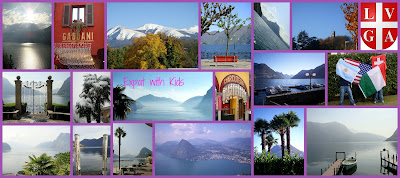"Semel in anno licet insanire"
translated from Latin: Once a year one is allowed to exaggerate
Bellinzona's Rabadan
From March 3rd to 8th, Bellinzona will be under the reign of King "Rabadan". Bellinzona is famous for its carnival. Rabadan, the name of this celebration, literally means noise. For a few days, more than 150’000 people joyfully celebrate in the streets and in marquees. This makes Rabadan the largest carnival in Switzerland, after the one in Basel.
The leader of this racket is Dante Pesciallo who has been elected “king” by the carnival association. On Fat Thursday, the first day of carnival, the mayor of Bellinzona hands him the (symbolic) keys to the gates of the city and for the next five days the fools rule Ticino’s capital.
The Friday of carnival is dedicated to the youngest: indeed, there is the parade for the children of Bellinzona and the surrounding area. On Saturday, carnival bands, so-called “Guggen”, from Ticino and the German-speaking part of Switzerland give concerts far into the night. The highlight of Rabadan is the big parade on Sunday. Around fifty carnival bands and carriages participate in the “Grande Corteo Mascherato”. On the television of the Italian-speaking part of Switzerland there is even a live broadcast of the parade.
The Rabadan which this year celebrates its 148th edition, offers a wide variety of entertaining activities to its visitors: Mask competitions, tug-of-war tournaments, theatres on the streets and the most traditional dish from Ticino: risotto. Meat and drink is further offered in numerous marquees. During carnival the celebrations in the city of Bellinzona stays up until dawn.
Click here to view the week's progamme
Chiasso turns into a „Free Republic“
Carnival is celebrated also in Chiasso, the town on the border with Italy. Here the ruler is not a monarch but the “Prime Minister of the Free Republic Nebiopoli”. The “Nebiopoli” is the largest and most important carnival event in the Sottoceneri, the southern part of Ticino.
During the “republican week” masked groups and “Guggen” turn Chiasso’s town centre into an entertainment quarter. The highlight takes place on the Tuesday of carnival, shortly before returning to everyday life: numerous carriages, groups and bands take part in the big parade which crosses Chiasso’s streets.
Ambrosian continuation
With the Roman rite carnival comes to an abrupt end on Ash Wednesday – however this is not the case in many parts of Ticino where celebrations only just start on this day. Indeed, in the region Tre Valli (Leventina valley, Blenio valley and Biasca), in Capriasca (Tesserete) and in Brissago the Ambrosian carnival is celebrated. The legend says that these villages refused the Roman rite in order to shorten the forty-day-long period of fasting before Easter (which starts on Ash Wednesday).
The fact is that in the Middle Ages these areas belonged to the diocese of Milan, while the other regions of Ticino where subordinated to the diocese of Como. Even if Ticino has become an independent diocese in 1888 the boundaries of the old dioceses revive during carnival time.
This means that depending on the region in Ticino either the Ambrosian or the Roman carnival continue to be celebrated. In the past this fact lead to tensions and priests of villages which belonged to the diocese of Como spoke of „abuse“. They even prohibited their members from entering Ambrosian territories during carnival.
In many different locations throughout the Canton, celebrations take place only at the end of the Carnival week, following the Ambrosian rite. Biasca, Brissago and Tesserete can pride themselves with some of the busiest Carnivals, with their Saturday parades featuring masked groups, floats and Guggen music bands. The large masked feasts in public spaces and in marquees all over the town centres start on Thursday night, with games, free risotto for everybody, many 'coriandoli' (coloured confetti papers) and bands performing live music. A wild world of colour, masks and sounds, finally winding down only on Sunday morning.
Some traces of the religious meaning of carnival – a last gluttony before the period of fasting – can be found when risotto is eaten under the open sky. This old tradition was born in the 19th century, when rich people offered rice to the poor who could not afford this expensive dish.
Lugano's Queen and King Sbroja
Lugano celebrates its carnival on Thursday, March 3 at 14:30 as the children of the local schools parade through the center of Lugano with their costumes. At around 15:30 when the kids arrive in Piazza della Riforma snacks are offered for all and at 17:00 the keys are presented to the King and Queen Sbroja.
On Monday, March 7 from 11:30 the classic risotto dish is offered for free in Piazza Riforma.
Click here to see Lugano's Carnevale programme by community.



No comments:
Post a Comment